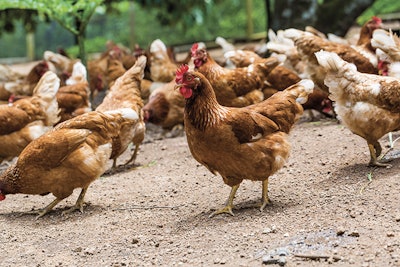
Bioinformatics combines computational and statistical approaches in order to analyze biological data, such as genome sequencing. A rapidly growing field of science, it has shown great promise to help monitor, identify and track poultry flock health.
“When bioinformatics is associated with a program for monitoring poultry health, it can be used to detect early infections that may affect the productivity of the flock and thus allows the early development of preventive or corrective management practices,” said Claudio Afonso, the Partner and Senior Scientist at Base2Bio, a project-based genomics consulting services for academic and governmental researchers.
A strong health monitoring program has become increasingly important because of the growing number of consumers demand free-range and pasture-raised poultry products.
Genome sequencing
Genome sequencing reveals the order of DNA building blocks found in an organism. It can be used to generate hundreds of million data points to analyze.
“Genome sequencing analyzes millions of sequences that originated in a sample collected from the farm. The nucleic acids of the disease agents that are present in a sample are decoded and compared to large databases of previously known disease agents. Once the comparison is made, it is possible to determine the relationship with other agents, the virulence and in some cases the source or origin,” Afonso explained.
“Most commonly, the technique is used by large poultry establishments to monitor a poultry flock for detection of unsuspected agents that may affect productivity.”
For example, genome sequencing can be used to identify if feed contains a contaminant or to detect the presence of foreign pathogens or bacteria like Tylosin resistant mycoplasma in poultry flocks.
Like what you just read? Sign up now for free to receive the Poultry Future Newsletter.
















